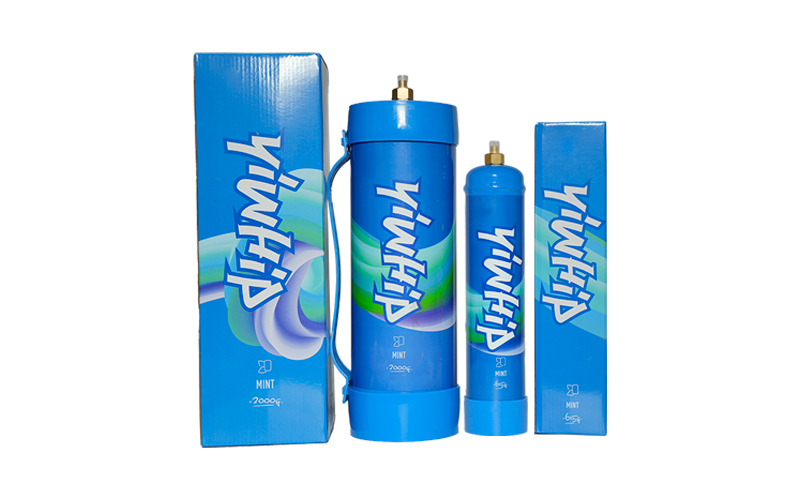If you’re a lover of whipped cream or someone who enjoys creating desserts at home, the term
N2O cream charger might already be familiar to you. These small, metallic canisters have become incredibly popular in both professional kitchens and households for their efficiency in making quick and consistent whipped cream. But do you really know everything there is about them?
N2O cream chargers are also commonly referred to as whipped cream chargers or nitrous oxide cartridges. They contain compressed
nitrous oxide (N2O) gas, which is injected into a dispenser to aerate and pressurize a mixture—most commonly dairy or vegan-based cream—to make it thick and fluffy. In this ultimate guide, we’ll walk through everything from how these little devices work to important facts about usage, legality, recycling, and safety.
So, get ready for a complete run-down on what makes N2O cream chargers an invaluable tool in today’s kitchen.
N2O cream chargers serve a simple yet powerful purpose. When placed in a whip cream dispenser, usually after filling it with liquid cream, the canister releases nitrous oxide under pressure.
The real magic comes next—
nitrous oxide dissolves into the fat of the cream. When the pressure inside the dispensing nozzle is released, tiny bubbles are trapped by fat molecules, resulting in airy yet dense whipped cream.
This method produces a significantly smoother and denser result than standard handheld whisks or electronic beaters. It works exceptionally well because:
- The cream reaches optimal consistency without overmixing.
- Fresh batches are prepared instantly, avoiding unnecessary waste or soggy results common with canned sprays.
- Nitrogen helps stabilize the foam texture, extending usability.
And the benefits go beyond basic cream topping—people use them creatively for making espumas, mousse, cocktails, soufflés, foamed sauces, and much more!
Versatility Beyond Whipped Desserts
While the traditional role of a
nitrous oxide charger has revolved around making creamy whipped delights, the possibilities today are truly vast—especially among chefs in contemporary and experimental kitchens.
Chefs frequently leverage this simple tool to enhance flavor delivery using spherification and
cold foams, adding flair to fine dining dishes. Beverage bars rely heavily on these to prepare layered textures ideal for espresso drinks, nitrogen brews, and alcoholic mixed creations. Home enthusiasts enjoy crafting restaurant-grade mousses, flavored airs, sorbets with a meringue base, and many other unique applications.
Another advantage is preservation: when sealed inside, the gas prevents spoilage by reducing oxidation in the container, helping maintain freshness until dispensing.
But here's something crucial: always remember not to mix flavors directly into the whipping chamber itself unless recipes specifically recommend that technique—many compounds can interact unpredictably if not given proper treatment.
Pro tip: For better outcomes with different kinds of emulsions or infusions, some high-end models like iSi Gourmet Whip Plus or Whip-It premium systems give precise control, especially where temperature plays an essential role.
Safety Considerations: Legal & Environmental Perspectives
Using a N2O cream charger responsibly means keeping your practice fun while maintaining safety awareness. Let’s explore some points everyone should bear in mind:
Starting with food grade requirements, only chargers explicitly labeled
"Food Grade Nitrous Oxide" should be used for edible purposes. Medical and auto-racing variants often contain contaminants and oils not meant for consumption.
Now, onto environmental impact. A single cartridge is small but still contributes when multiplied across millions sold annually. The good news is that unlike CO2, N2O emissions aren't harmful directly to climate change unless exposed over long time spans. However, the production process for such gas does pose energy challenges. To reduce ecological strain, ensure proper disposal and encourage
responsible recyclers’ habits—some cities accept small steel containers via metal recycling schemes.
What about health implications? While inhaling directly from chargers—a recreational misuse dubbed “hippie crack"—can have dangers involving neurological issues or even vitamin B12 suppression, culinary use poses minimal risk. If used correctly following instructions included with quality products like BestWhip, EZChurn, or PrecisionWhip—your exposure remains negligible since food never absorbs excess unvented gas during normal operation cycles. Also, storing cartridges securely and safely away from children is advised.
Lastly, the laws: in most American states, owning or purchasing whipped cream chargers legally requires you simply intend them for foodservice or approved gastronomic tools—meaning selling pure cream charged items in cafes and bakeries isn't problematic as long as they meet local code regulations (e.g., sanitation practices, etc.).
Making the Most Out of Your Investment
Here’s how users—from aspiring pastry cooks to professional bartenders—can make informed purchases and ensure longevity when utilizing these handy capsules:
When choosing a product,
buy reliable name brand charges: While store brands may offer slight price advantages initially, they sometimes compromise build integrity. Popular options like iSi or Creamwhip boast precision-fitting heads compatible with leading models of dispensers available today without jamming risks due improper threading/seal dimensions.
You might ask, “How should I clean my dispenser afterward?" Great question. After emptying the device, dismantle components and rinse each one thoroughly immediately after every use before air dries fully between sessions. Never let old dairy dry solidified on any internal mechanism—it will clog valves and create mold growth quickly otherwise.
Additionally:
- If you want stronger volume output from thinner mixtures like soy milk-based creams, try chilling the container first.
- You can chill dispensers longer prior before serving to maintain shape stability on warmer days outdoors—such a smart idea for summery gatherings.
- For repeated dispensings over hours (ideal for busy events), you might keep extra cool charges stored separately from warm environments so that thermal fluctuation doesn't weaken gas pressure prematurely once loaded later during service period
- Want to elevate texture further for gourmet desserts or fancy coffeeshop orders? Consider blending xantham gum alongside gelatin, which gives superior structure retention under extended sitting periods
In short:
knowing the basics makes all the difference, regardless of whether your focus leans more towards practical everyday tasks rather than pushing creative boundaries with molecular cuisine techniques.

